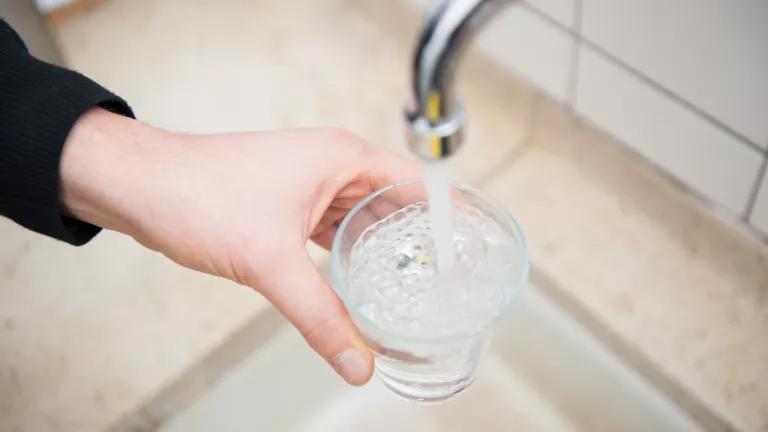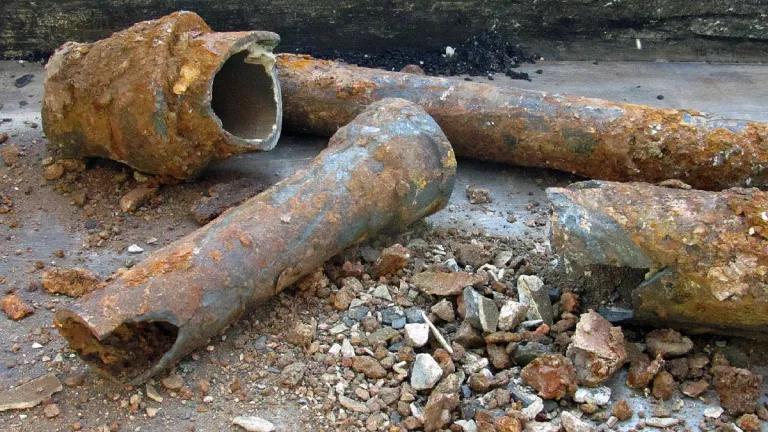EPA’s New Rules for Drinking Water Right-to-Know Reporting Are a ‘Mixed Bag’
Regulation forcing water utilities to publicly disclose contamination makes modest improvements but fails to explicitly ban false or misleading statements.

The U.S. Environmental Protection Agency (EPA) announced on May 15, 2024 new final rules that are supposed to improve the right-to-know reports that drinking water utilities must provide to consumers about contaminants in their tap water and whether they have violated federal standards. The new regulations require some modest improvements in these reports but fail to explicitly prohibit water utilities from making false or misleading claims in their reports, despite evidence that they often contain disingenuous or incorrect statements.
The Safe Drinking Water Act requires these reports, which are sometimes referred to as “consumer confidence reports,” to be provided to consumers who drink the water once a year. Under a 2018 amendment to that law and the new rule, starting in 2027 larger systems will be required to issue the reports twice a year. The new rules also should help make these reports more understandable.
However, in the face of an outcry from water utilities, EPA decided not to finalize a provision it had proposed that would have prohibited the utilities from making “false or misleading” statements in these reports. NRDC has cited frequent statements in these reports such as bold claims that “your drinking water is safe” despite the system having known violations of health standards.
EPA’s new rule is a mixed bag. It’s great that it requires water utilities to improve their right-to-know reports to consumers by including a short summary of any violations at the top of the report. It’s also important that the rule requires that compliance monitoring data be reported directly to EPA; currently states only report violations (not the actual underlying data) to EPA. EPA and Government Accountability Office audits have found that under the current system, there is significant underreporting to EPA of violations and compliance issues. This change should help address that problem.
But EPA retreated in the face of fierce industry opposition from its proposal that would have prohibited false and misleading information in the reports. That’s a big disappointment. While the rule requires better reporting of water testing data to EPA and some modest improvements to ensure more understandable reports, we are concerned that troubled water systems may continue to mislead their consumers.
The more we know about contaminants in our tap water, the more we can press our water systems and government for solutions. More information also helps arm us with information to force polluters upstream to fix the contamination problems.
The Law Requires Improved Right-to-Know Reports for Consumers; NRDC Sued to Get Rules Issued
The Safe Drinking Water Act requires right-to-know reports to include information about contaminants in tap water and possible health risks from that contamination. The reports must be delivered to more than 300 million drinking water consumers every year.
In 2018 amendments to the Safe Drinking Water Act that NRDC championed, Congress directed EPA to revise the rules governing drinking water right-to-know reports by October 2020. The revised rule is supposed to increase the readability, clarity, and understandability of the reports; to make them more accurate and more effective at communicating risk; and to increase reporting frequency. When EPA failed to meet the deadline set by Congress, NRDC filed a lawsuit in 2021 to prod EPA to act. The agency signed a consent decree to issue final rules by May 14, 2024. On May 15, EPA issued of those rules.
Discouraging Experience with Unintelligible, Misleading, Sometimes False Right-to-Know Reports
NRDC and our allies filed detailed comments on the EPA proposed rule documenting that, in practice, the reports are often long, technical, full of jargon and confusing, and sometimes highly misleading or outright false. The comments highlighted for example the Flint right-to-know reports for 2015 and 2016 which didn’t mention the lead violations and failed to admit serious lead contamination. The comments included a rogue’s gallery of misleading or untrue statements in reports from multiple cities, even where EPA had tagged the utility as a national enforcement priority due to multiple violations.
Moreover, because of distribution problems, even when the reports are accurate and understandable, many people never see them. The new EPA rule made modest improvements in distribution requirements for the reports but is not expected to ensure that all consumers receive this information.
As a result, the public may not get timely, clear information about potential risks from contaminated drinking water. The reports often have been used to obscure problems rather than to educate consumers. Too often, water systems have used these reports more as public relations documents than to meaningfully inform their consumers about health risks posed by contaminants in their drinking water and how they may protect themselves and their families. Frequently, the utilities bury and obscure problematic information about their water deep into the report and include sweeping generalizations about safety and compliance, while ignoring or minimizing all too real risks, at the front.
As NRDC alum Aaron Colangelo has highlighted, defective right-to-know reports undermine the Safe Drinking Water Act. Community water systems routinely violate drinking water standards. If people don’t get meaningful, timely and accessible information about contamination in their tap water, they can’t take steps to protect themselves. They also can’t put pressure on their water system to fix problems quickly.
Improving right-to-know reports would also promote environmental justice. An NRDC report found that drinking water protections in this country are not equally distributed: Communities of color and low-income communities have higher rates of drinking water violations. One way to mitigate the harm is to provide prompt, clear information about health threats from local water contamination.
Better Right-to-Know Reports Could Help Improve Drinking Water Safety
Improving the right-to-know report rules would be an important step towards improving the safety of tap water delivered to hundreds of millions of people. While EPA did make some modest improvements in the rules, the agency missed the mark by not explicitly prohibiting misleading or false information. We will continue to press the agency, states and utilities to improve these reports. The rules governing drinking water right-to-know reports and more forthright utility disclosure of water quality challenges would help to better inform the public about the tap water they are drinking and empower them to press their utilities and elected leaders for change.



